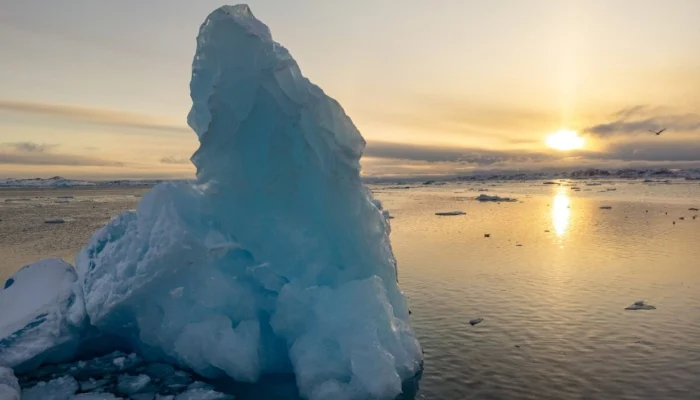Greenland’s expansive ice sheet experienced a melting rate 17 times faster than its historical average during a heatwave in May that also impacted Iceland, as reported by the scientific network World Weather Attribution (WWA) on Wednesday.
The Arctic region is at the forefront of global warming, having heated up four times more rapidly than the rest of the planet since 1979, according to a 2022 study published in the scientific journal Nature.
“The melting rate of the Greenland ice sheet by, from a preliminary analysis, a factor of 17… means the Greenland ice sheet contribution to sea level rise is higher than it would have otherwise been without this heat wave,” stated Friederike Otto, an associate professor in climate science at Imperial College London and one of the report’s authors, to reporters.
She further emphasized, “Without climate change this would have been impossible.”
In Iceland, temperatures soared beyond 26 degrees Celsius (79 Fahrenheit) on May 15, an unprecedented occurrence for that time of year on the subarctic island. The WWA noted, “Temperatures over Iceland as observed this May are record-breaking, more than 13°C hotter than the 1991-2020 average May daily maximum temperatures.” According to the country’s meteorological institute, 94% of Iceland’s weather stations recorded record temperatures in May.
In eastern Greenland, the hottest day during the heatwave was approximately 3.9°C warmer compared to the preindustrial climate, the WWA reported. “While a heatwave that is around 20°C might not sound like an extreme event from the experience of most people around the world, it is a really big deal for this part of the world,” Otto explained, highlighting its global impact. “It affects the whole world massively,” she added.
According to the WWA, the record high temperatures observed in Iceland and Greenland this May could now reoccur every 100 years.
For Greenland’s indigenous communities, the warmer temperatures and melting ice directly impact their ability to hunt on the ice, posing a significant threat to their livelihood and traditional way of life. These environmental shifts also have critical implications for the infrastructure in both countries.
“In Greenland and Iceland, infrastructure is built for cold weather, meaning during a heatwave ice melt can lead to flooding and damage roads and infrastructure,” the WWA concluded.



